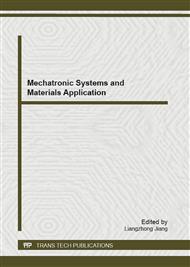p.268
p.272
p.279
p.287
p.297
p.309
p.313
p.320
p.325
Cutter Exit Effects during Milling of Thin-Walled Inconel 718
Abstract:
During milling of thin-walled components, chatter vibrations give rise to process issues. These include dimensional inaccuracy, damaged and scrap parts, and damaged cutting tools. This, in turn, leads to loss of production time with increasing cost as a consequence. This paper identifies the force profile during a single cut milling process. It focuses on the exit and post-exit behavior of the cut and discusses the process dynamics. The force profiles of various tool-to-workpiece positions are analyzed as regards the exit and post exit phases. A standard on-the-market cutter and a specially designed zero rake cutter are used in the investigation. Finally, a time-domain simulation of the force is performed and compared to the experimental results. The study concludes that a small change in exit angle may result in a considerable improvement in cutting behavior. In addition, the tool position should be chosen so that the cutter exits in the least flexible direction possible for the workpiece.
Info:
Periodical:
Pages:
297-308
Citation:
Online since:
November 2012
Keywords:
Price:
Сopyright:
© 2012 Trans Tech Publications Ltd. All Rights Reserved
Share:
Citation:


